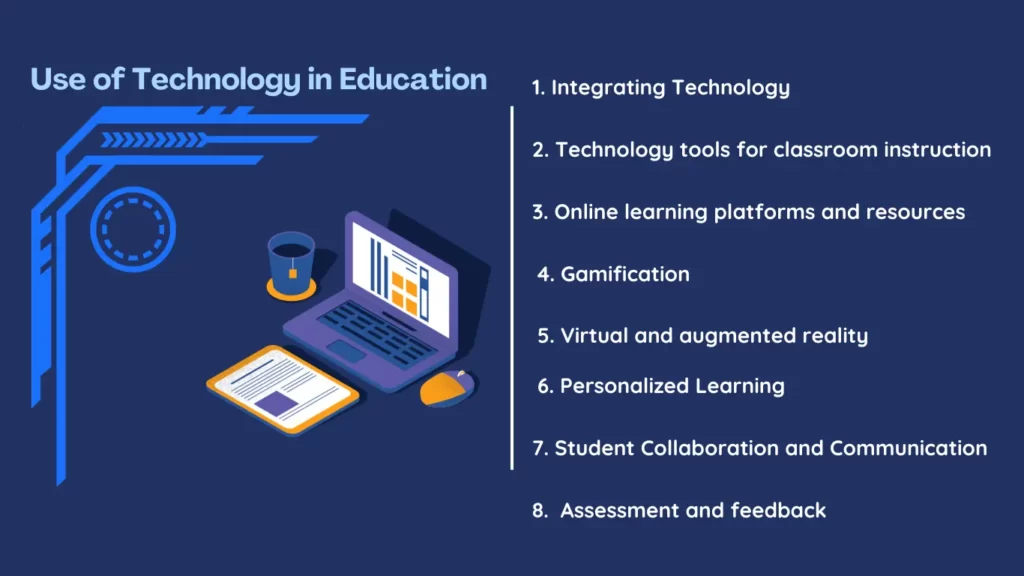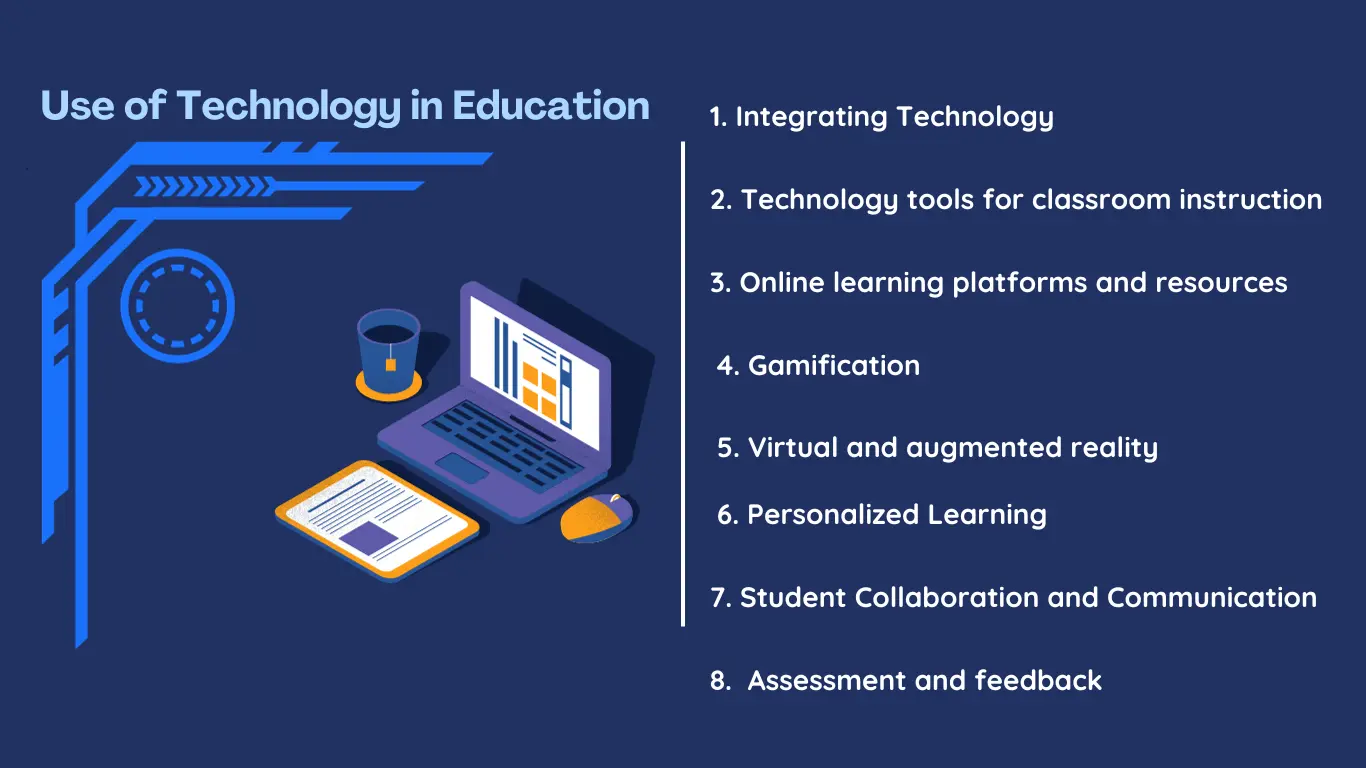Use of Technology in Education: In today’s fast-paced world, technology has become an integral part of our lives. It has not only revolutionized the way we communicate, work, and entertain ourselves, but it has also transformed the field of education.

In this article, we will explore the various uses of technology in education, highlighting its numerous advantages and addressing the challenges and considerations that come with it.
1. Integrating Technology in Education
Integrating technology in education brings forth a plethora of benefits. Firstly, it enhances engagement and motivation among students. Traditional methods of teaching can sometimes be monotonous and fail to capture the attention of students.
Technology in education promotes personalized learning. Every student has unique learning needs and preferences. Technology allows educators to tailor lessons to cater to individual students, ensuring that they learn at their own pace and in a style that suits them best.
With just a few clicks, students can explore online libraries, databases, and academic journals, gaining access to a wealth of information that goes beyond what traditional textbooks offer.
2. Technology tools for classroom instruction
Technology facilitates communication and collaboration in the classroom. Platforms like Google Classroom and Microsoft Teams enable students to collaborate on projects, share resources, and communicate with their peers and educators in real-time.
When it comes to classroom instruction, technology offers a myriad of tools that can enhance the teaching and learning experience. Interactive whiteboards, for instance, enable educators to present information more engagingly and dynamically. These visual aids help students visualize abstract ideas and make connections, resulting in a deeper understanding of the subject matter.
3. Online learning platforms and resources
The advent of online learning platforms has revolutionized the way education is delivered. These platforms offer a wide range of courses and resources that can be accessed anytime, anywhere, making education more accessible and flexible.
Online learning platforms foster lifelong learning. In today’s rapidly evolving world, acquiring new knowledge and skills is crucial for personal and professional growth. Online courses and resources enable individuals to upskill and reskill, equipping them with the tools and knowledge needed to thrive in a rapidly changing job market.
4. Gamification in education
Gamification, the integration of game elements and mechanics in non-game contexts, has gained popularity in the field of education. By leveraging the natural inclination towards competition, rewards, and achievement, gamification motivates and engages students in their learning journey.
Gamified learning experiences are designed to be immersive, interactive, and challenging, creating a sense of excitement and fostering a growth mindset. However, by introducing game elements such as leaderboards, badges, and levels, educators can create a sense of achievement and progress, making learning a fun and rewarding experience.
5. Virtual and augmented reality in education
Virtual and augmented reality technologies have opened up new possibilities in the field of education. These immersive technologies provide students with realistic and interactive experiences that go beyond what traditional textbooks and lectures can offer.
Virtual reality (VR) immerses students in a computer-generated environment, transporting them to places they may never have the opportunity to visit. For example, students studying ancient civilizations can virtually visit historical sites and witness events unfold before their eyes.
6. Technology in Personalized Learning
Personalized learning aims to tailor instruction to meet the individual needs of each student, ensuring that they learn at their own pace and in a style that suits them best. Technology plays a crucial role in enabling personalized learning, offering tools and resources that adapt to the needs of each learner.
Moreover, technology allows for differentiated instruction. With the help of multimedia resources, interactive simulations, and adaptive quizzes, educators can provide multiple pathways for students to explore and understand a concept. This flexibility accommodates different learning styles, ensuring that each student can engage with the material in a way that resonates with them.
7. Technology for Student Collaboration and Communication
In today’s interconnected world, collaboration and communication skills are essential for success. Technology provides students with a wide range of tools and platforms that facilitate collaboration and communication, both inside and outside the classroom.
Collaborative tools, such as Google Docs and Microsoft Office 365, enable students to work together on projects in real time, regardless of their physical location. This promotes teamwork, encourages the exchange of ideas, and fosters a sense of community and belonging. Students can collaborate on documents, presentations, and spreadsheets, allowing for seamless collaboration and efficient workflow.
8. Technology for assessment and feedback
Technology offers a wide range of tools and resources that enhance assessment and feedback, making it more efficient and effective. Assessment is an integral part of the learning process, providing educators with valuable insights into students’ understanding and progress.
Online quizzes and assessments allow educators to assess students’ understanding in a timely manner. These quizzes can be automatically graded, providing instant feedback to students and enabling educators to identify areas of weakness that require further attention. This real-time feedback helps students track their progress and make necessary adjustments to their learning strategies.
Conclusion
Technology has undoubtedly transformed the field of education, offering a wide range of tools and resources that enhance the teaching and learning experience. From interactive whiteboards and educational apps to online learning platforms and virtual reality, technology has the power to engage and motivate students, promote personalized learning, foster collaboration and communication, and facilitate assessment and feedback. However, it is important to address the challenges and considerations that come with the integration of technology, such as the digital divide, ongoing professional development, student well-being, and privacy and security concerns. By harnessing the power of technology and embracing future trends, we can create a more inclusive, engaging, and effective educational experience for learners around the world.

